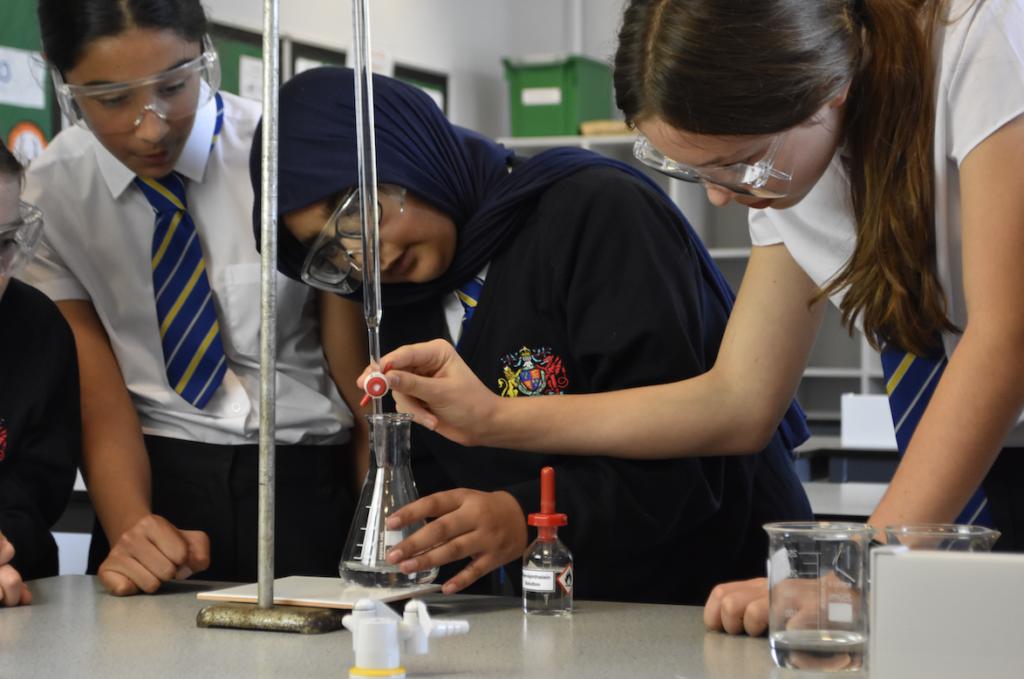Paper 1:
Section A : Conflict and tension, 1918–1939
This wider world depth study enables students to understand the complex and diverse interests of different individuals and states. It focuses on the causes of the Second World War and seeks to show how and why conflict occurred and why it proved difficult to resolve the issues which caused it. This study also considers the role of key individuals and groups as well as how they were affected and influenced by international relations.
Section B : Germany, 1890–1945: Democracy and dictatorship
This period study focuses on the development of Germany during a turbulent half century of change. It was a period of democracy and dictatorship – the development and collapse of democracy and the rise and fall of Nazism. Students will study the political, economic, social and cultural aspects of these two developments and the role ideas played in influencing change. Students will also look at the role of key individuals and groups and the impact the developments had on them.
Paper 2:
Section A : Britain – Power and the people
This thematic study will enable students to gain an understanding of the development of the relationship between the citizen and the state in Britain over a long period of time. It considers the causes, scale, nature and consequences of protest to that relationship. By charting the journey from feudalism and serfdom to democracy and equality, it reveals how, in different periods, the state responds to challenges to its authority and the consequences. It allows students to construct an understanding of the rights and responsibilities of the citizen.
Section B : Elizabethan England, c.1568–1603
This option allows students to study in depth a specified historical period, the last 35 years of Elizabeth I’s reign. The study will focus on some major events of Elizabeth I’s reign considered from the economic, religious, political, social and cultural standpoint and arising controversies.
Year 10
Autumn Term
1: To what extent was peace achieved after World War One?
How was the post-war settlement reached? The armistice: aims of the peacemakers; Wilson and the Fourteen Points; Clemenceau and Lloyd George; the extent to which they achieved their aims.
What were the contents of the settlement? The Versailles Settlement: Diktat; territorial changes; military restrictions; war guilt and reparations.
What impacts did the settlement have? Impact of the treaty and wider settlement: reactions of the Allies; German objections; strengths and weaknesses of the settlement, including the problems faced by new states.
Students will investigate how historians investigate the past, construct claims, arguments and write accounts.
Students need to know how the post-war settlement was constructed out of the conflicting priorities of the peacemakers, what its key provisions were, and how these provisions were likely to impact the countries affected by the relevant treaties
What was the League of Nations and how was it designed to work? The League of Nations: its formation and covenant; organisation; membership and how it changed; the powers of the League; the work of the League’s agencies; the contribution of the League to peace in the 1920s, including the successes and failures of the League, such as the Aaland Islands, Upper Silesia, Vilna, Corfu and Bulgaria.
How did other treaties affect the League? Diplomacy outside the League: Locarno treaties and the Kellogg-Briand Pact.
2: Was the League of Nations destined to fail?
How and why did the League fail in the 1930s? Impact of the Great Depression, plus case studies of the Manchurian and Abyssinian crises.
Students will investigate how historians investigate the past, construct claims, arguments and write accounts.
Students need to know how the League of Nations was set up to function, how it was supported/undermined by other agreements, and key causes and symptoms of its ultimate failure to solve the crises of the 1930s.
Spring Term
1: Why was World War Two not avoided?
Why was the League of Nations unable to prevent war in 1939? The collapse of the League: the effects of the Depression; the Manchurian and Abyssinian crises and their consequences; the failure of the League to avert war in 1939. (NB: this is largely taught in the prior section, KQ2.)
How and why did international tension begin to escalate in the 1930s? The development of tension: Hitler’s aims and Allied reactions; the Dollfuss Affair; the Saar; German rearmament, including conscription; the Stresa Front; Anglo-German Naval Agreement.
Why did no-one succeed in stopping Germany before the Second World War? Escalation of tension: remilitarisation of the Rhineland; Mussolini, the Axis and the Anti-Comintern Pact; Anschluss; reasons for and against the policy of appeasement; the Sudeten Crisis and Munich; the ending of appeasement.
Students need to know why tension emerged in the early 1930s (especially between European powers), why a policy of appeasement was pursued, and how and why this policy failed to resolve the tensions that had emerged.
Summer Term
1: How did power and religion change in Elizabethan times?
What was the role of Elizabeth’s court and parliament? Including: background and character of Elizabeth I; court life, including patronage; key ministers
Why was it difficult to be a female ruler? Including: relations with Parliament; the problem of marriage and the succession; the strength of Elizabeth’s authority at the end of her reign,
What religious matters did Elizabeth face throughout her reign? Including: the question of religion, English Catholicism and Protestantism; Elizabeth’s excommunication
Who was Elizabeth I?
Who was powerful in Elizabethan England?
Why was it difficult to be a female ruler?
Why was marriage so important to Elizabeth I?
Norfolk’s rebellion – The Northern Rebellion 1569 and the Ridolfi Plot 1571 (causes, events, consequences)
Why did rebellions against Elizabeth fail?
How did England’s religion change under Elizabeth?
Reactions to religious changes: England and abroad
Elizabeth and the ‘Catholic threat’
What were the beliefs of Puritans?
Students will investigate how historians investigate the past, construct claims, arguments and write accounts.
Students will develop this knowledge as they analyse key features from and characteristics of the Elizabethan period by: explaining the significance of events and key individuals; analysing and using sources to investigate the topic; evaluating interpretations about the topic
2: What was life like during Elizabethan England?
2: A ‘Golden Age’: living standards and fashions; growing prosperity and the rise of the gentry; the Elizabethan theatre and its achievements; attitudes to the theatre.
The poor: reasons for the increase in poverty; attitudes and responses to poverty; the reasons for government action and the seriousness of the problem.
English sailors: Hawkins and Drake; circumnavigation 1577–1580, voyages and trade; the role of Raleigh. – The Historic Environment – The Americas and Drake’s circumnavigation of the globe
Year 11
Autumn Term
1: How did Elizabeth’s authority change at home and abroad?
1: Essex’s Rebellion 1601
Conflict with Spain: reasons; events; naval warfare, including tactics and technology; the defeat of the Spanish Armada.
2: How were royal authority and feudalism challenged in Medieval England?
2: Constraints on kingship: the barons’ dissatisfaction with King John’s rule and its resolution; Magna Carta, its terms and its short and long-term impact.
The origins of parliament: issues between King Henry III and his barons; the role of Simon de Montfort; the Provisions of Oxford and the Parliament of 1265 and their short and long-term impact.
3: How was royal authority challenged during the early modern period?
3: Medieval revolt and royal authority: the social, economic and political causes of the Peasants Revolt; actions by rebels and government; impact of the Peasants’ Revolt.
Popular uprisings against the Crown: the social, economic, religious and political causes of the Pilgrimage of Grace; the implications for royal authority; Henry VIII and his government’s reaction and the impact of the uprising.
Divine Right and parliamentary authority: the causes of the English Revolution; the New Model Army and the development of political radicalism during the Civil War era; the short and long-term impact of the English Revolution, including the significance of trial and execution of Charles I and Oliver Cromwell and the Commonwealth.
Royal authority and the right to representation: the causes of the American Revolution including the relationship between the government and people; impact and significance of the American Revolution.
Spring Term
1: What was the role of protest movements in reforming British life in the 19th and 20th centuries?
1: The extension of the franchise: radical protest; the Great Reform Act, causes and impact, including further reform; Chartism, causes, actions and impact.
Protest and change: campaigning groups and their methods and impact, including the Anti-Slavery movement; the Anti-Corn Law League; factory reformers; social reformers.
Workers movements: the development of trade unionism and its impact, including Grand National Consolidation Trades Union (GNCTU), Tolpuddle Martyrs, New Model Unions and new unionism, including the match girls’ and dockers’ strikes.
2: How did minority groups fight for equal rights in the late 20th and early 21st century?
2: Women’s rights: the campaign for women’s suffrage, reasons, methods and responses; role of individuals, including the Pankhursts; the reasons for the extension of the franchise and its impact; progress towards equality in the second half of the 20th century.
Workers’ rights: the General Strike (1926), actions, reactions and impact; trade union reform in the late 20th century.
Minority rights: the development of multi-racial society since the Second World War; discrimination, protest and reform; the Brixton Riots, their impact, including the Scarman Report.
Summer Term
Revision and preparation for GCSE examinations
Assessment at Key stage 4
Internal: Assessments which include exam style questions at the end of each topic, mock examination at the end of year 10, mock examination in year 11 (content varies each year). Students will be given regular feedback which they will use to create targets and track these over the course of the year.
External: Year 11 summer term terminal examination
Paper 1 and 2 (2 hours each)
How can parents help support their child’s learning?
Completing homework set by staff and accessing Google Classroom to help support learning outside of the classroom. Access websites such as BBC bitesize, BBC teach,Oxford University Press textbooks and revision guides, GCSE pod, Seneca
Enrichment opportunities
Year 10 attend a trip to a historic environment. In the past, they have visited the National Maritime Museum, Kenilworth Castle and Hardwick Hall.
GCSE course/s (exam board and code)
![]()



